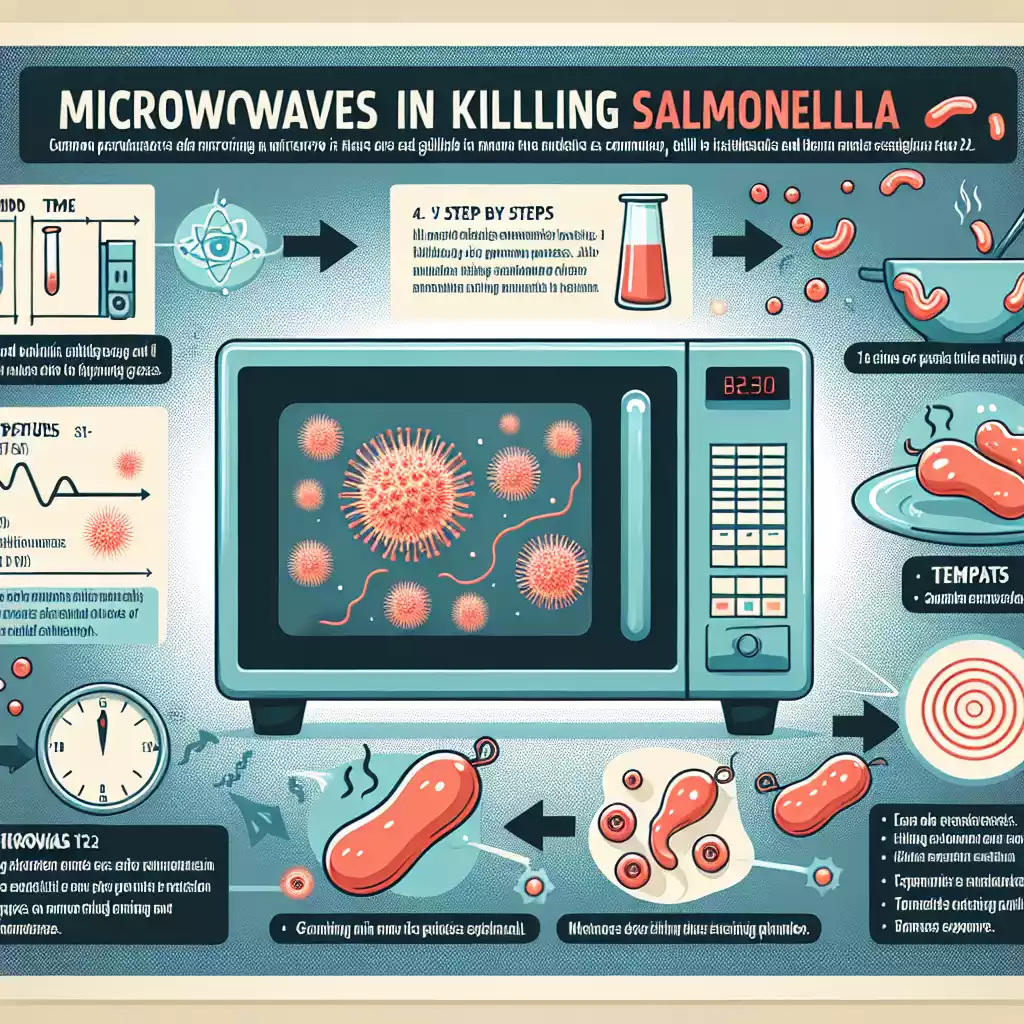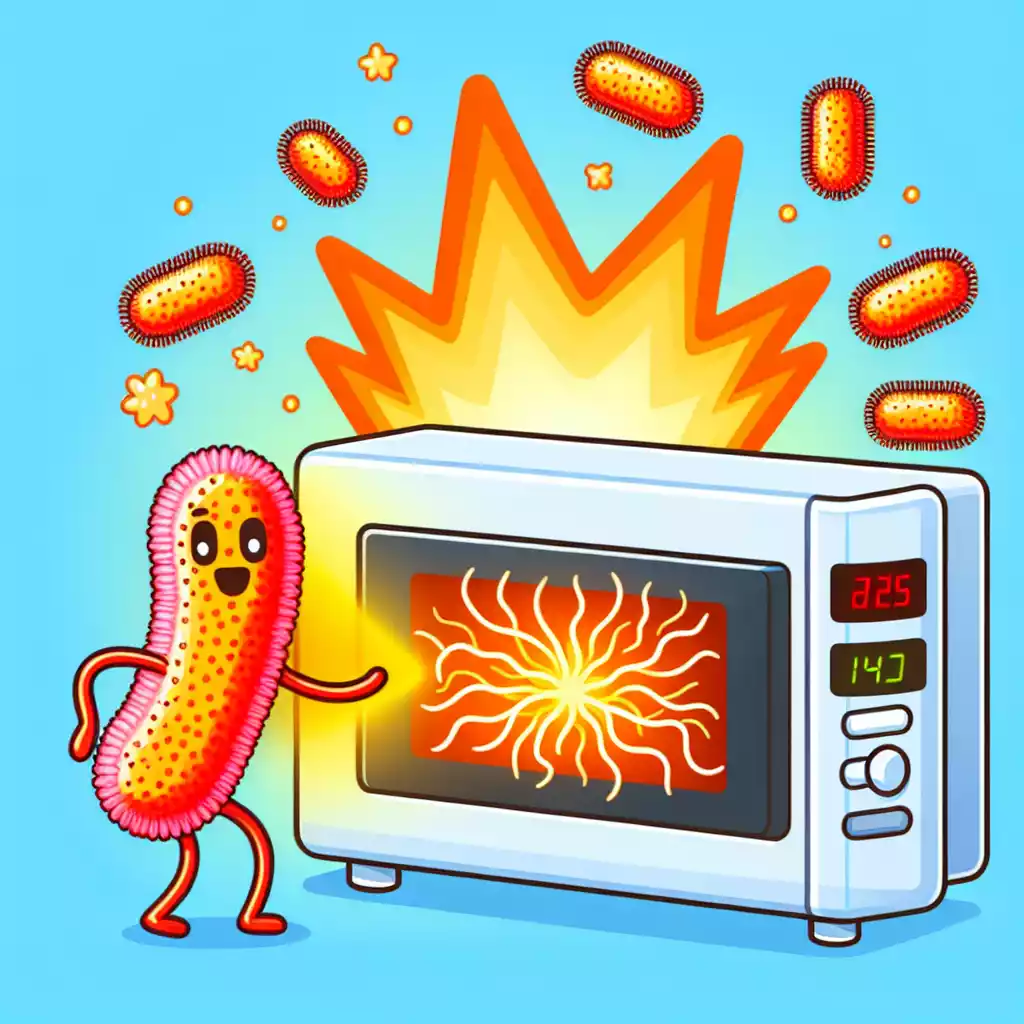Introduction
Imagine you’re about to reheat last night’s chicken in the microwave. You might wonder if it’s safe to eat. The thought of foodborne illnesses, especially Salmonella, can be quite concerning. Salmonella, a bacteria often found in raw poultry, eggs, and certain produce, can cause severe food poisoning. This article dives into whether microwaving your food can effectively kill Salmonella and ensure your meal is safe.
Salmonella is notorious for causing foodborne illnesses, leading to symptoms like diarrhea, fever, and abdominal cramps. The Centers for Disease Control and Prevention (CDC) estimates that Salmonella causes about 1.35 million infections, 26,500 hospitalizations, and 420 deaths in the United States annually. Given these statistics, understanding how to eliminate this bacteria is crucial.
Microwave ovens, a staple in many kitchens, use electromagnetic waves to heat food quickly. But can they achieve the temperatures necessary to kill harmful bacteria like Salmonella? This article explores the science behind microwaves, the conditions required to eliminate Salmonella, and practical tips to ensure your food is safe to eat. Let’s uncover the truth about microwaving and food safety.
Understanding Salmonella
What is Salmonella?
Salmonella is a group of bacteria commonly associated with foodborne illnesses. Named after American scientist Daniel Elmer Salmon, these bacteria thrive in the intestines of animals and humans. They are often transmitted through contaminated food or water.
Common Sources of Salmonella
Salmonella can be found in various foods, including:
• Raw poultry: Chicken and turkey are common carriers.
• Eggs: Bacteria can be present on the shell and inside the egg.
• Produce: Fruits and vegetables can be contaminated through contact with animal feces.
• Unpasteurized milk: Raw dairy products can harbor the bacteria.
Symptoms of Salmonella Infection
Symptoms of a Salmonella infection typically appear 6 hours to 6 days after ingestion and include:
– Diarrhea
– Fever
– Abdominal cramps
– Nausea and vomiting
Most people recover without treatment, but severe cases may require medical attention.
Microwave Cooking and Food Safety

How Microwaves Work
Microwave ovens use electromagnetic waves to heat food. These waves cause water molecules in the food to vibrate, generating heat. This process heats food quickly but can sometimes result in uneven cooking.
General Safety Tips for Microwave Cooking
To ensure food safety when using a microwave:
• Cover food: Prevents splatters and promotes even cooking.
• Stir and rotate: Helps distribute heat evenly.
• Use a food thermometer: Ensures food reaches a safe internal temperature.
Salmonella and Heat Treatment
Required Temperature to Kill Salmonella
Salmonella is killed at temperatures of 165°F (74°C) or higher. Ensuring food reaches this temperature is crucial to eliminate the bacteria.
Methods of Heat Treatment
Various cooking methods can kill Salmonella, including:
• Boiling
• Baking
• Grilling
• Microwaving (with proper techniques)
Microwaving Food to Kill Salmonella
Effectiveness of Microwaves in Killing Bacteria
Microwaves can kill bacteria, but their effectiveness depends on several factors:
• Temperature: Food must reach 165°F (74°C).
• Even heating: Ensuring all parts of the food are heated uniformly.
Proper Techniques for Microwaving Food
To ensure your microwave kills Salmonella:
• Use a microwave-safe cover: Traps steam and promotes even cooking.
• Stir and rotate food: Ensures even heat distribution.
• Check temperature: Use a food thermometer to verify the internal temperature.
Factors Affecting Microwave Efficiency
Food Thickness and Density
Thicker and denser foods require more time to heat evenly. Ensure all parts of the food reach the safe temperature.
Microwave Wattage and Power Settings
Higher wattage microwaves cook food faster. Adjust cooking times based on your microwave’s power.
Common Mistakes to Avoid
Uneven Heating
Microwaves can cause hot and cold spots. Stir and rotate food to avoid uneven heating.
Inadequate Cooking Times
Underestimating cooking times can result in undercooked food. Use recommended cooking times and verify with a thermometer.
Tips for Safe Microwave Cooking
Using a Food Thermometer
Always check the internal temperature of your food. Insert the thermometer into the thickest part to ensure it reaches 165°F (74°C).
Stirring and Rotating Food
Stir and rotate food halfway through cooking to promote even heating and eliminate cold spots.
Alternatives to Microwaving for Killing Salmonella
Conventional Oven
Ovens provide consistent heat, making them effective for killing bacteria. Ensure food reaches the safe temperature.
Boiling and Steaming
Boiling and steaming are effective methods for killing Salmonella. Ensure food reaches the safe temperature.
Real-life Cases and Studies
Case Studies on Microwave Cooking and Salmonella
Several studies have examined the effectiveness of microwaves in killing bacteria. One study found that microwaving chicken for 5 minutes at full power killed Salmonella, provided the food was evenly heated.
Scientific Research Findings
Research indicates that microwaves can effectively kill bacteria if food is cooked to the proper temperature. However, uneven heating remains a challenge.
FAQs
Can microwaving leftovers kill salmonella?
Yes, microwaving leftovers can kill Salmonella if the food reaches an internal temperature of 165°F (74°C).
Is it safe to microwave raw chicken?
Microwaving raw chicken is safe if it is cooked to an internal temperature of 165°F (74°C). Use a food thermometer to verify.
How long should I microwave food to kill salmonella?
The time required depends on the food’s thickness and density. Ensure the internal temperature reaches 165°F (74°C).
Does reheating food in the microwave kill all bacteria?
Reheating food can kill most bacteria if the food reaches 165°F (74°C). However, some heat-resistant bacteria may survive.
What is the best way to ensure food safety in the microwave?
Use a food thermometer, stir and rotate food, and ensure it reaches an internal temperature of 165°F (74°C).
Conclusion
Microwaving can kill Salmonella if done correctly. Ensuring food reaches an internal temperature of 165°F (74°C) is crucial. Use proper techniques, such as stirring, rotating, and using a food thermometer, to promote even heating. By following these tips, you can safely enjoy your microwave-cooked meals.
| Food Item | Safe Temperature (°F) | Microwave Cooking Time |
|---|---|---|
| Chicken Breast | 165°F | 5-7 minutes |
| Leftovers | 165°F | 2-3 minutes |
| Vegetables | 165°F | 2-4 minutes |

